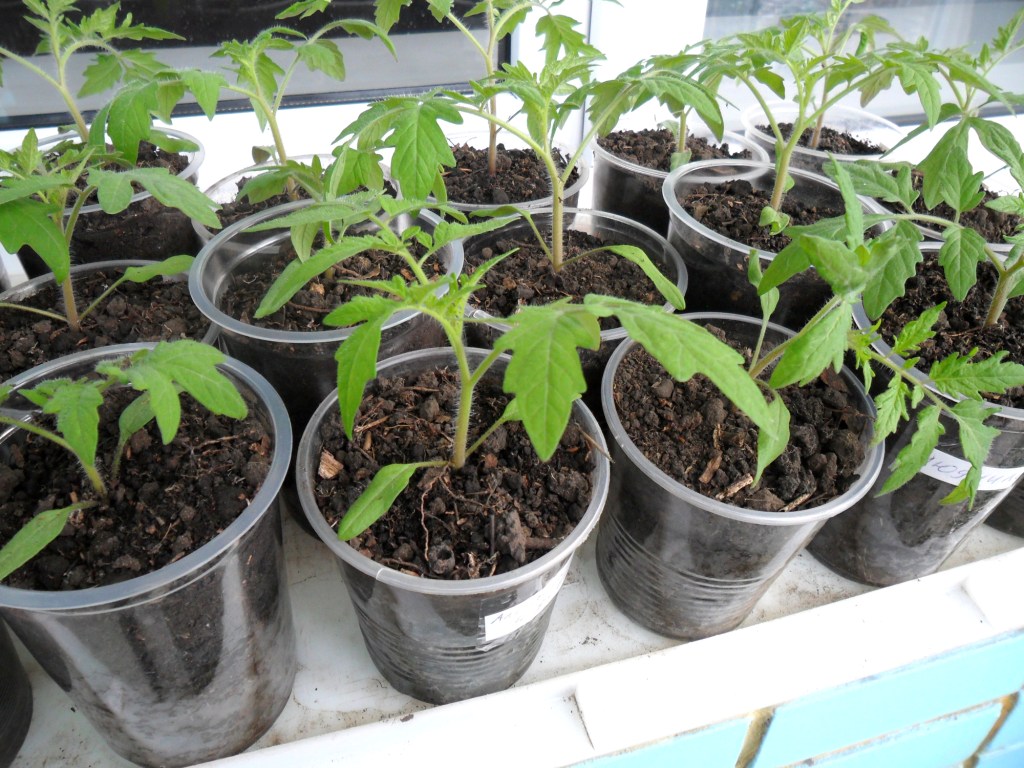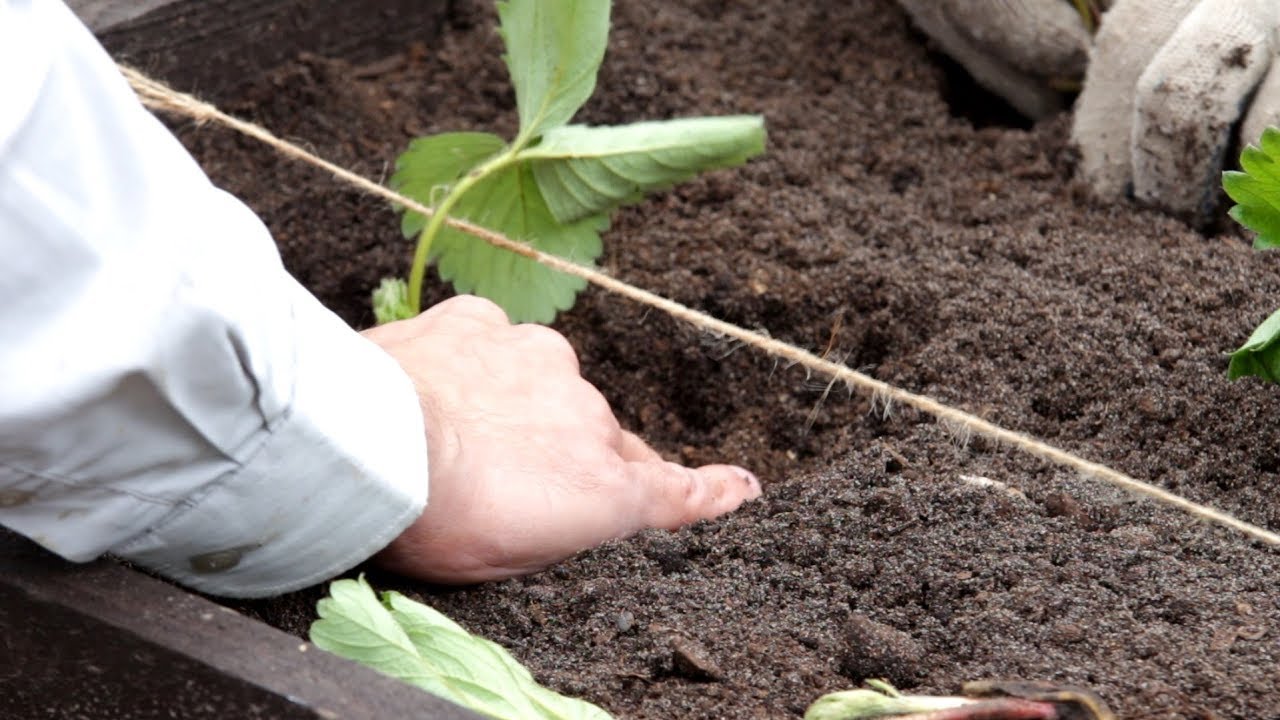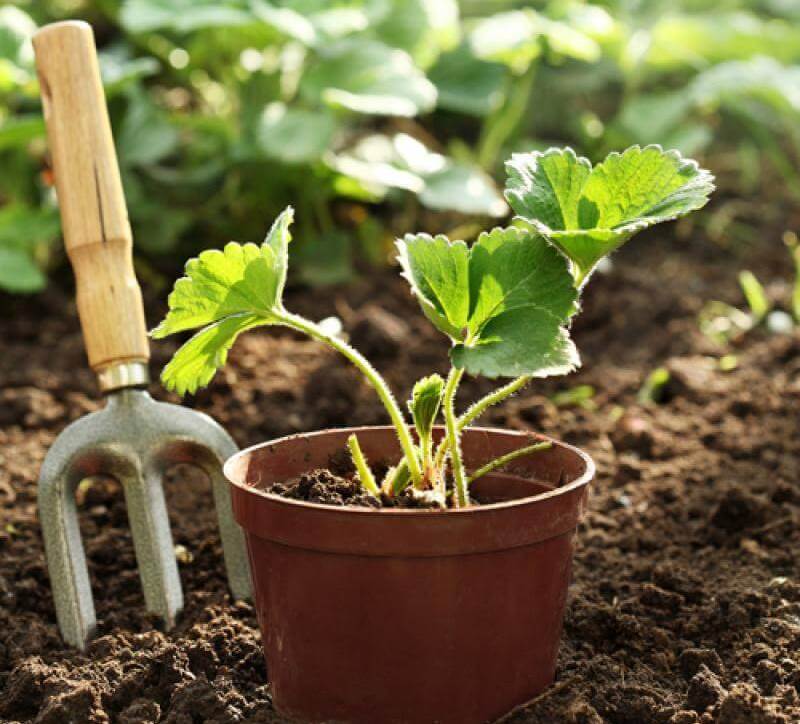Flower lovers must have noticed beautiful bright balls in glasses or vases on the shelves of flower shops. In gardening, this know-how has appeared recently, but the tool immediately became popular with flower growers. Beautiful and bright balls are a hydrogel for plant care. What is this innovation, how to use it correctly and what should be considered when buying a hydrogel for plants?
What is the hydrogel for?
Many flower lovers will be interested in learning in more detail what a hydrogel is, how to use it so as not to harm your favorite plants. Recently, the tool has been often advertised and in great demand. This is not surprising, because the colorful granules look attractive, and they can be used for different purposes.
The hydrogel is in the form of granules, less often of a powder; in this form it is sold in bags. Beautiful multi-colored balls are made of granular polymer. The appearance of the balls is very attractive and many gardeners buy the hydrogel as a decorative tool. A window sill with flowers looks not only green, but also elegant. But this approach is wrong, since the bright balls have a different purpose.
A hydrogel for indoor plants good moisture absorption... By sucking up water, the granules grow tenfold. One gram of hydrogel is capable of absorbing up to 200 grams of liquid. Gel balls give the accumulated moisture to the roots of indoor plants.
The flower hydrogel was designed to keep plants hydrated between occasional waterings. The swollen granules mix with the soil in which the flowers grow. On average, plants have enough moisture for 2-3 weeks. The roots grow into granules and absorb water. Much depends on the root system of flowers and its development. The granules continue to remain in the soil and after the next watering they are again saturated with moisture.
Due to this property of the hydrogel, the roots of plants will not rot from excess moisture. If you water indoor flowers with impure water, and with fertilizers, then the granules will be filled with this composition and bring double benefits to the plants. There are two types of hydrogelsintended for flowers.
- Soft - it has practically no color, thanks to its softness, the roots of plants freely penetrate through it and feed on moisture. It is great for those who cannot often water the flowers, and for germinating seeds and rooting cuttings.
- Dense (aqua soil) - can have different shapes in the form of balls, cubes, pyramids. It is classified as a decorative polymer, used for germinating seeds, It is convenient to use it instead of water in vases with bouquets of flowers.
Hydrogel: instructions for use
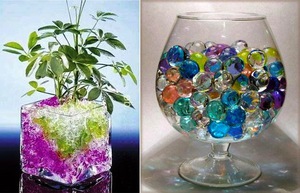 Hydrogel granules come in a variety of colors and sizes, and are sold as such. Packaging may vary in weight... Typically, small granules are used to germinate seeds, while larger granules are used to add to the soil. The color of the substance does not affect its properties.
Hydrogel granules come in a variety of colors and sizes, and are sold as such. Packaging may vary in weight... Typically, small granules are used to germinate seeds, while larger granules are used to add to the soil. The color of the substance does not affect its properties.
Before using the gel, it is soaked in water, after which it absorbs moisture and significantly increases in size. It is believed that only 2 tablespoons of granules are enough for a 3-liter volume. After the granules are filled with water, they can be discarded in a colander and the remaining water drained.
Unused pellets can be stored perfectly in the refrigerator in an airtight container. When stored at room temperature, they shrink and crystallize.
In order to germinate seeds, the hydrogel balls must also be saturated with water and preferably with fertilizers. In this state, it will do more good. The pellets themselves do not contain the nutrients necessary for the plants, therefore water-soluble fertilizers will promote good growth and seed germ development.
Very often, gardeners use the substance to germinate seeds in several convenient ways. Much depends on the size of the seeds. Initially, the hydrogel was invented for use in agriculture, but as time has shown, it has become more in demand among gardeners.
The seeds can be sown in pure gel with water. After being saturated with moisture, they swell greatly, after which they can be crushed to the desired state in a convenient way:
- rub through a sieve;
- grind with a blender.
The prepared mass is laid out in a container with a layer of 3 cm and seeds are spread on top. Very large granules can be cut in half and spread the seeds on top by gently pressing with a toothpick. If the seeds are buried too deep, they will not have access to air. The entire seed is covered with foil. It needs to be removed periodically to ventilate the seeds.
Very often, gardeners use hydrogel to grow seedlings, in the ratio 3-4 parts potting mix and 1 part granules... The prepared mixture is filled in containers for growing seedlings and a thin layer of pure crushed hydrogel is placed on top. Seeds are placed in the top layer of the gel, after which they are sprayed with water and covered with a film.
It is possible to germinate seeds in a pure gel, but in the phase of cotyledonous leaves, the seedlings must be transplanted into the ground. It is advisable to transplant with a piece of gel so as not to damage the root.
Plant hydrogel application
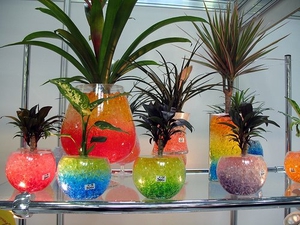 It is often used to grow indoor flowers and garden plants. It is usually added when planting in a hole or in a potting soil. Due to its ability to retain moisture, the hydrogel is very convenient to use for those who do not have the opportunity to frequently water plants.
It is often used to grow indoor flowers and garden plants. It is usually added when planting in a hole or in a potting soil. Due to its ability to retain moisture, the hydrogel is very convenient to use for those who do not have the opportunity to frequently water plants.
The gel is very convenient to use, it can be apply dry and soaked... The dry matter after watering will immediately absorb excess moisture and then give it to the plants. Experts recommend using the swollen gel for potted plants, and add it dry in the garden. The proportion will depend on many factors:
- soil conditions;
- planting conditions;
- frequency of watering.
For a long time, the hydrogel will absorb moisture and then give it to the plants. After the expiration date, it decomposes into ammonium, water and carbon dioxide, and nothing else is in it.
Hydrogel and aqua primer - what's the difference?
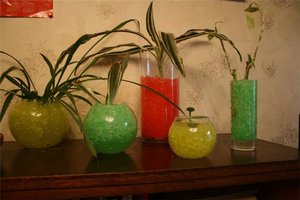 Many unscrupulous manufacturers of this product, at the peak of its popularity, began to produce a completely different product. It has nothing to do with the hydrogel. A colorful alternative called "aqua primer" has an attractive appearance and is in high demand. The tool is available in different forms, which performs only a decorative function... If used incorrectly in potting mix, it will only harm the root flower system.
Many unscrupulous manufacturers of this product, at the peak of its popularity, began to produce a completely different product. It has nothing to do with the hydrogel. A colorful alternative called "aqua primer" has an attractive appearance and is in high demand. The tool is available in different forms, which performs only a decorative function... If used incorrectly in potting mix, it will only harm the root flower system.
The sensational advertising also often misrepresents information, for example, that aqua soil can be used in its pure form for germinating seeds. Buyers confuse it with a hydrogel and only harm their flowers and seed. For this reason, many negative reviews about the hydrogel began to appear. Many simply confuse it with aqua soil, use it incorrectly, so the end result is disastrous.
When buying an aqua primer or hydrogel, you need to consider for which types of plants the products will be used. They are suitable for some plants, but there are types, showing negative reactions... It is best to use both products in a potting mix to keep the flowers in their familiar environment. Hydrogel or aqua soil in its pure form does not have nutrients, therefore it cannot create the necessary conditions for the active development and growth of flowers.
